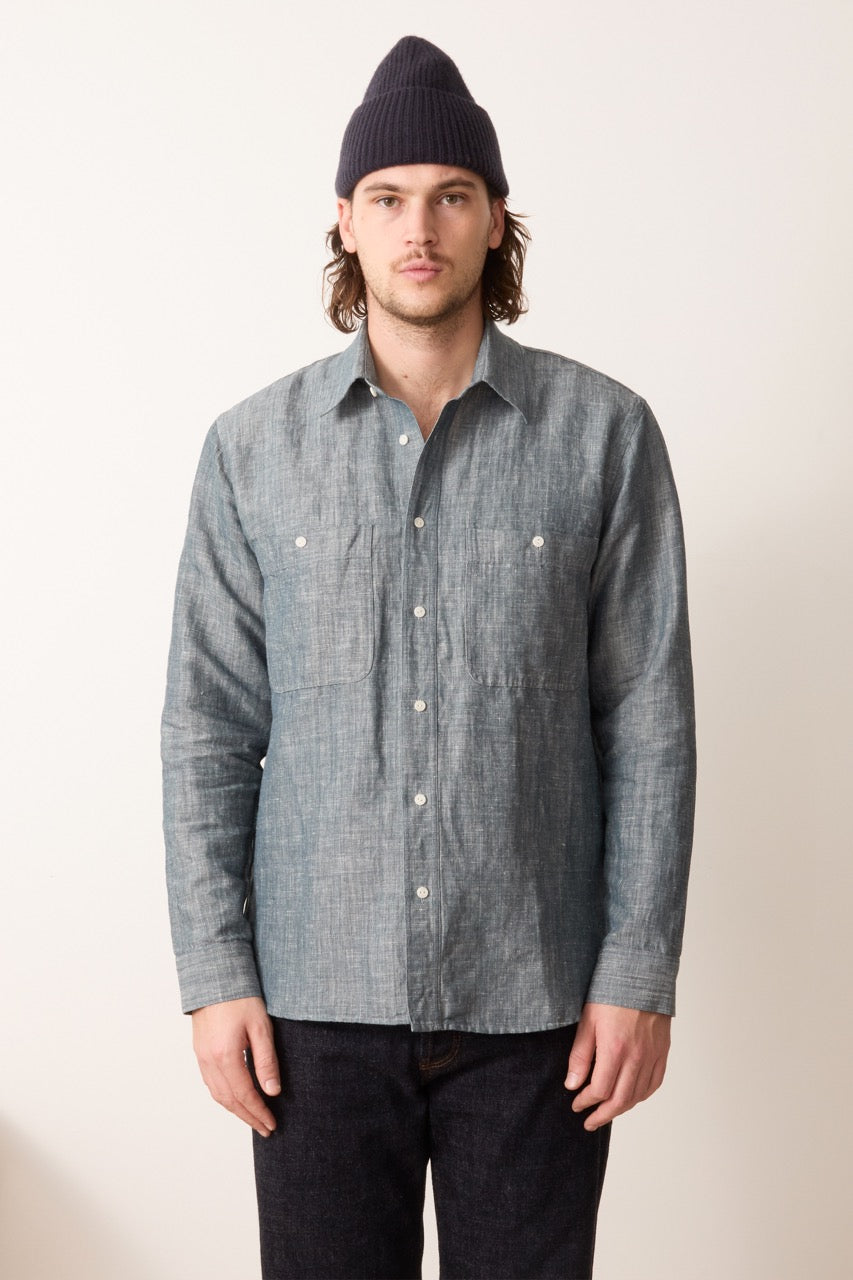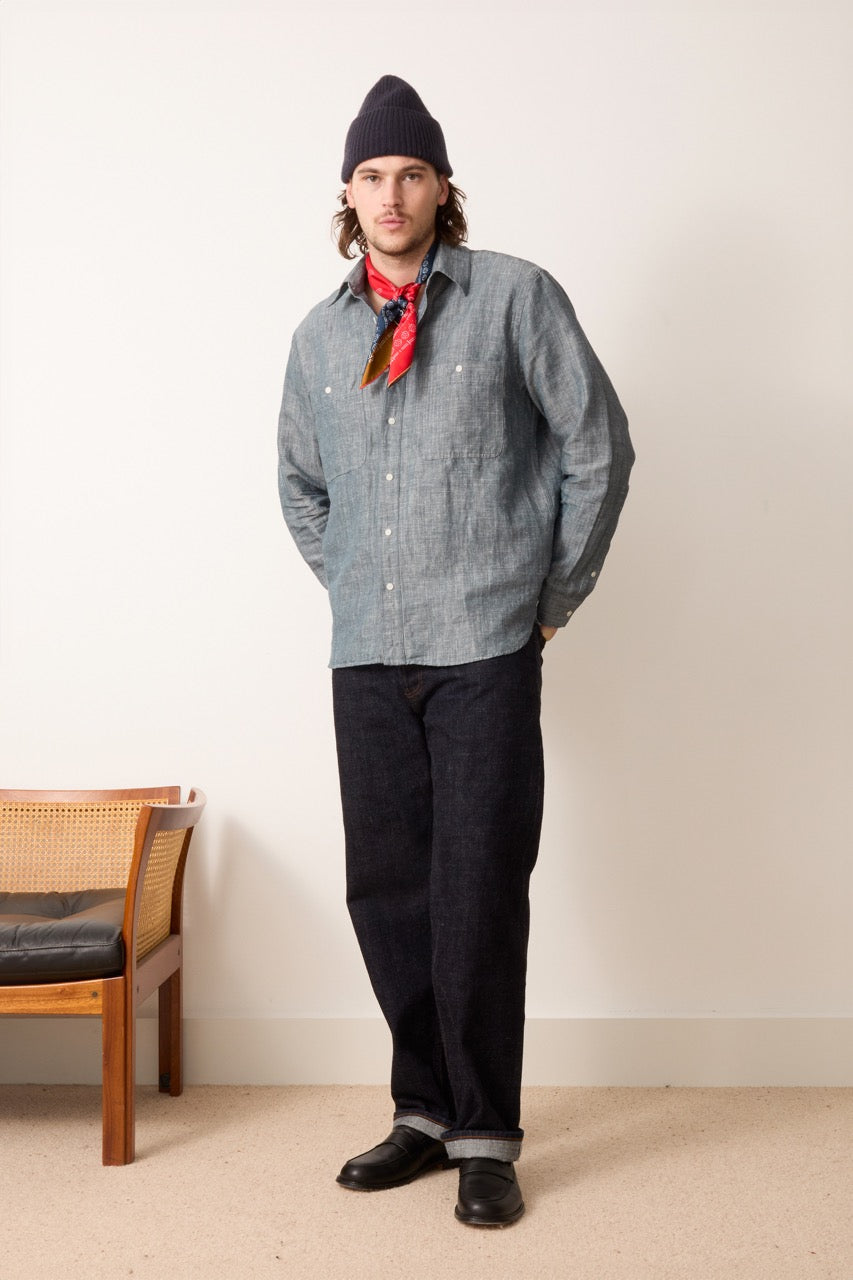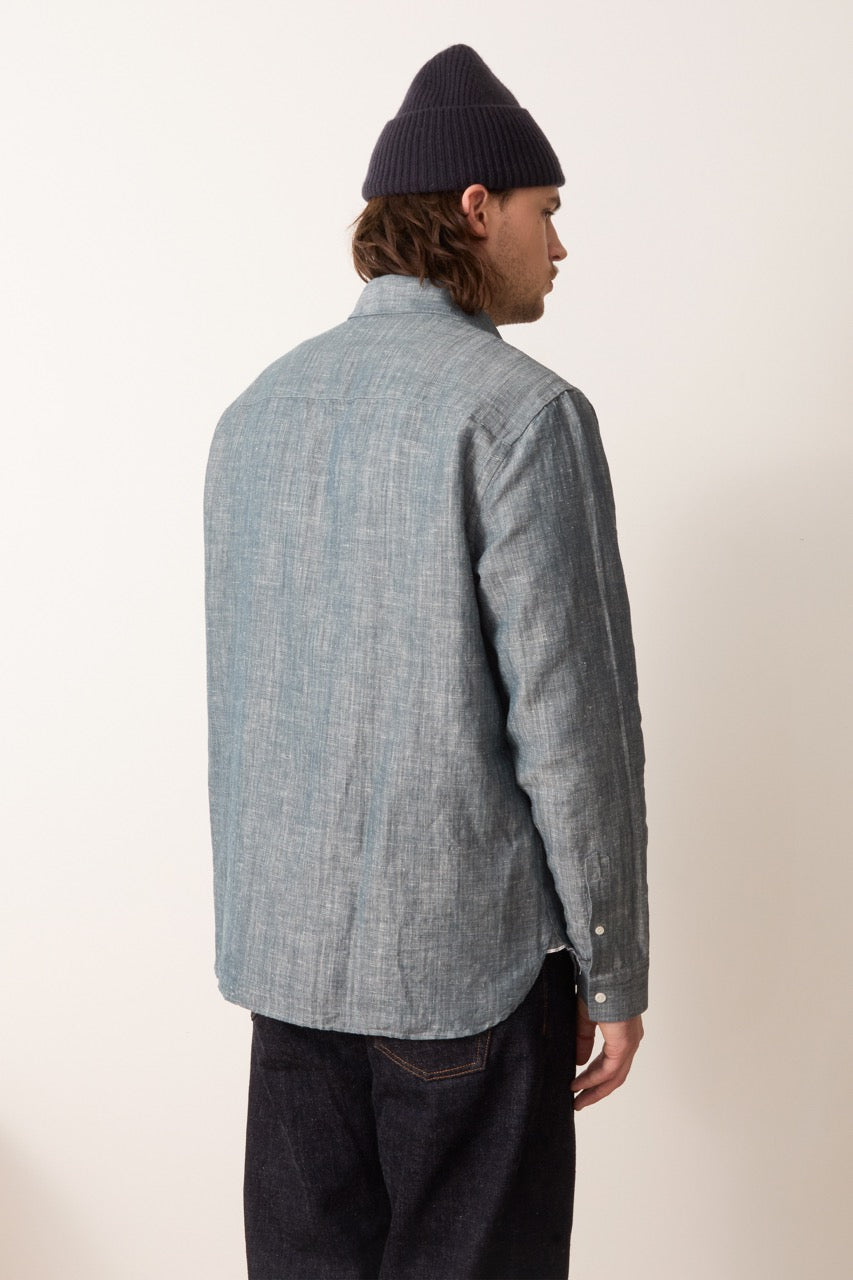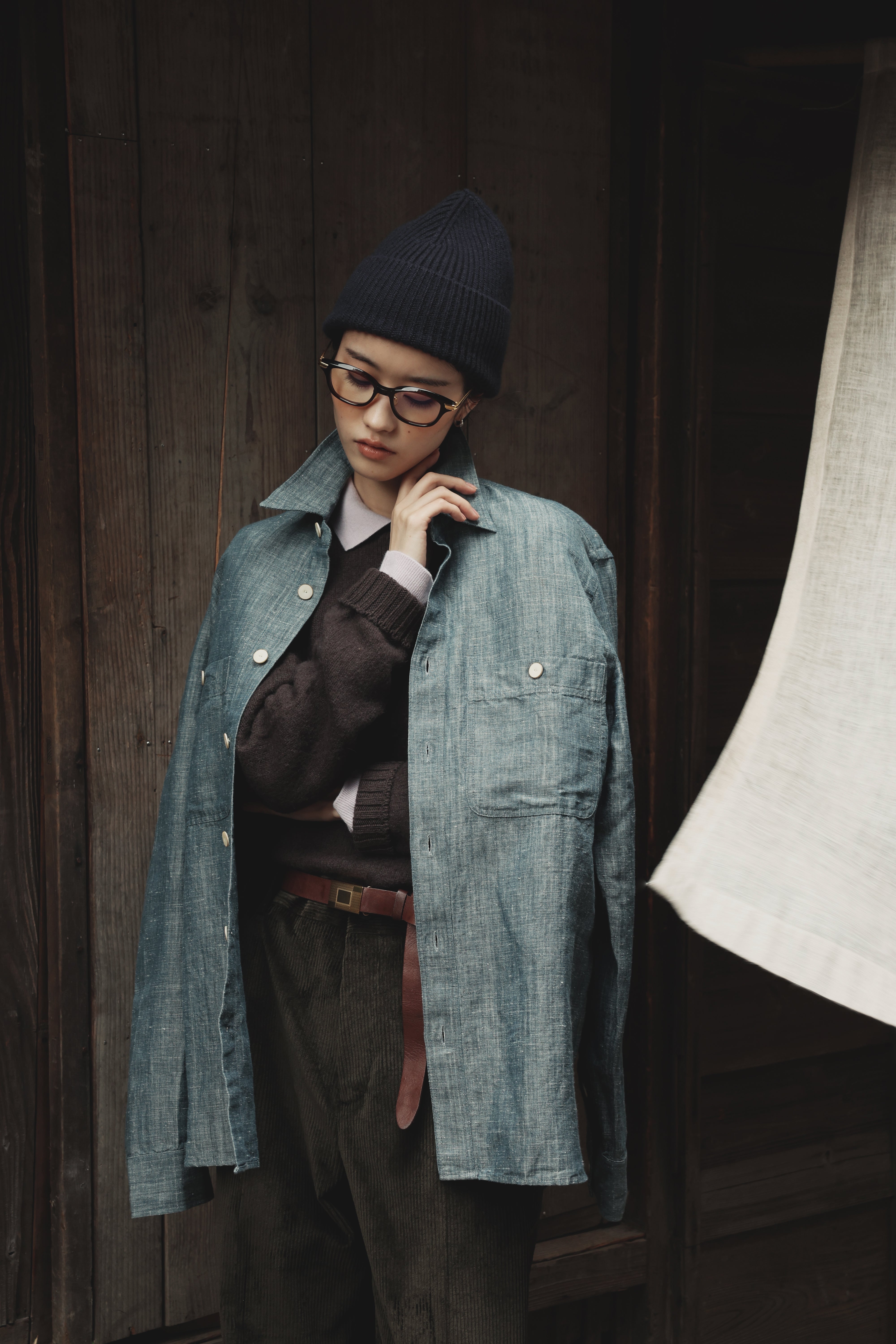If you could only have one...
How can a chambray shirt become the favorite piece in your wardrobe, even years down the line? To properly celebrate our brand’s 10th anniversary, our co-founder Benoît focused on what you’ve loved from the start: nothing over-the-top but a simple, versatile essential that subtly stands out thanks to the beauty of its fabric and, above all, the authenticity of its story.
#1: A timeless design that keeps on captivating
It began as a simple work uniform, yet it ended up on the shoulders of American stars. It is highly sought after in the vintage market, and is still reproduced by the most refined Japanese brands. The success story of the USN (United States Navy) shirt starts in 1941, when it became part of the U.S. Navy uniform.
Its chambray, softer and lighter than denim but almost as durable, was already a staple for American workers. Add those two iconic chest pockets, and you have the ultimate practical shirt, which captured the public’s interest after the war and became a staple in American culture.
Steve McQueen wore it while playing a Navy machinist in The Sand Pebbles (1966), Paul Newman wore it as a prisoner in Cool Hand Luke (1967), and Elvis wore it while playing guitar in several performances.
It was a natural choice for Benoît, who wanted to draw inspiration from a timeless classic with character. And it required significant effort from our product team, who refined the details through three prototypes to offer you a contemporary yet timeless interpretation of this shirt, with pockets, collar, and buttons in generous, balanced proportions.












